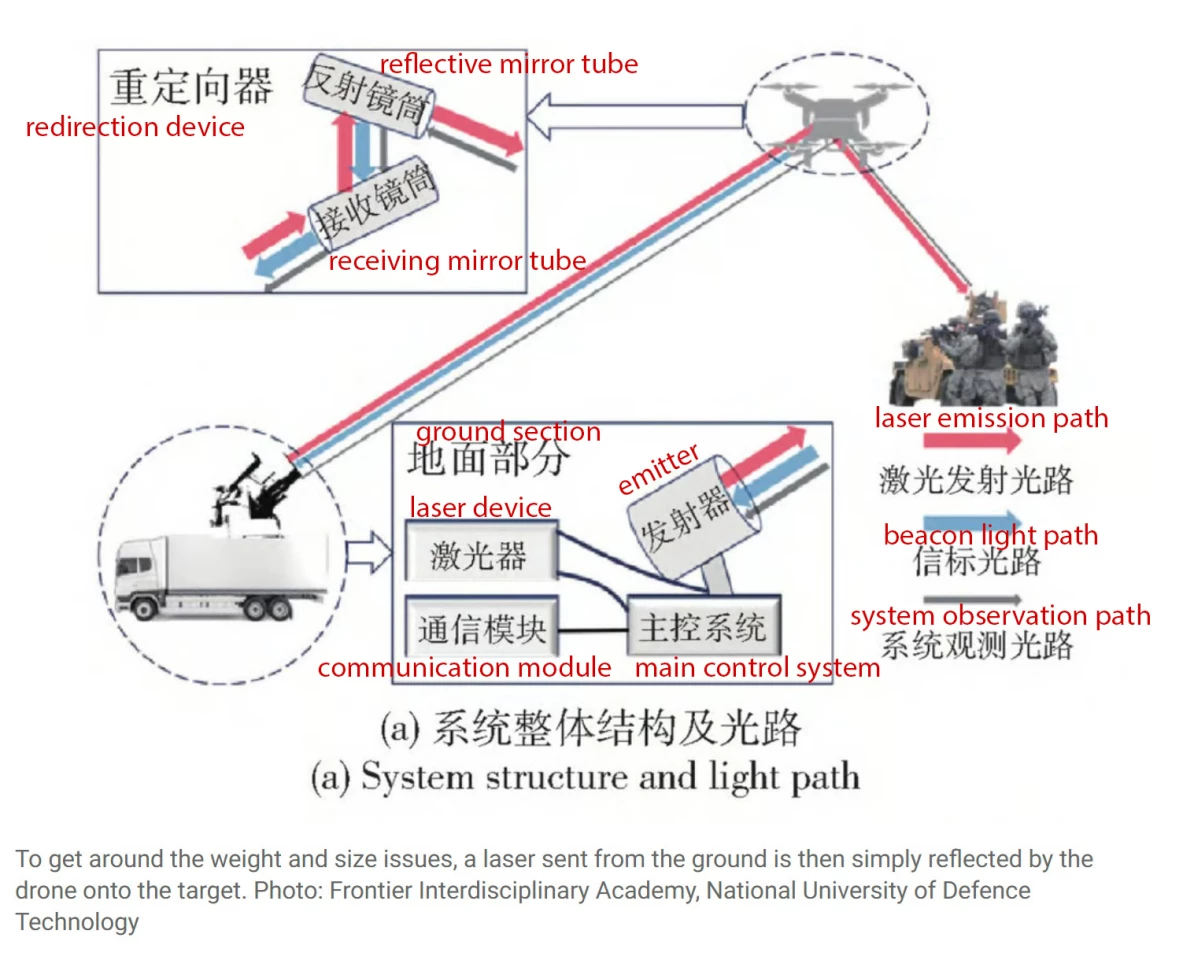Drones have another weapon in the arsenal thanks to "Crazy Li" Xiao: lasers. Not just lasers, but ones powerful enough to vaporize human tissue on contact and cut through metal.
We've seen plenty of directed energy weapons lately designed to take down drone threats in combat operations – now, it seems, the drones have some lasers of their own.
The Hong Kong-based South China Morning Post just posted an article that begins like this:
"A squad of fully armed soldiers follow closely behind a Humvee armoured vehicle, cautiously advancing through the ruins of an urban battlefield. About a kilometre ahead of them in the sky, a small drone hovers in place. Suddenly, one soldier lets out a scream, clutching his eyes with both hands as smoke curls between his fingers."
It paints a horribly descriptive picture of the potential of this new technology developed by researchers led by Li Xiao – who fittingly pens his email prefix "crazy.li" in his research paper – who have successfully tested the use of a 1 kilowatt, 1080 nanometer wavelength laser from a small drone.
Instant blindness would likely rate pretty low on the scale of things to worry about if faced with such a weapon. A single millisecond of contact from a laser that powerful would cause tissue vaporization and charring. Materials like plastics, wood, and fabrics would ignite or disintegrate almost instantly. Even sheet metal is no match for a 1 kW laser, and can be melted through in about a tenth of a second.
Mind you, kilowatt-class lasers are still far too heavy and bulky for a compact drone to carry. So how can Xiao and his team make these kinds of claims?
They don't; the laser isn't kept on board. Instead, the drones are equipped with a simple-yet-effective vibration-damping gimbal with two telescope-like tubes. One of these collects the near-infrared laser light issued from a mobile ground station, and relays it to the other tube which reflects the powerful beam – "sufficient to cut through metal" according to Xiao – onto the target.

Near-infrared lasers are invisible to the human eye, and special equipment would be required to detect their source.
A 1-kW, 1,080-nm laser is considered to be a Class 4 laser, typically used for welding, cutting and drilling metals. The 1080-nm wavelength is particularly well-absorbed by metals like stainless steel, carbon steel and aluminum, allowing it to melt metals quickly so they can be welded.
To put it in perspective, at 1 kilowatt, it would take about 17 seconds to melt through a 1-inch (2.54-cm) steel armor plate if the conditions were right. While there are far more powerful lasers out there, seeing a battlefield drone wielding this type of technology would be truly frightening.
Over the last month, OpenAI, Meta, and Anthropic have partnered with military defense companies Anduril Industries, Palantir, and others to combat such threats. Other energy weapons, like the Radio Frequency Directed Energy Weapon (RFDEW) already exist to fight off drone swarms, where ballistics might not be efficient.
Source: South China Morning Post





